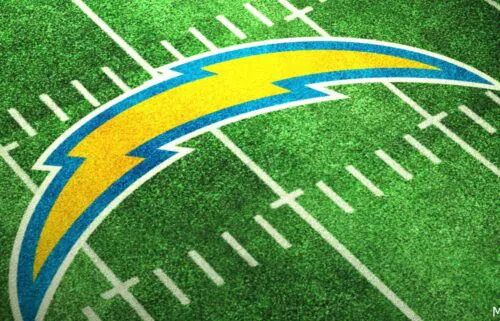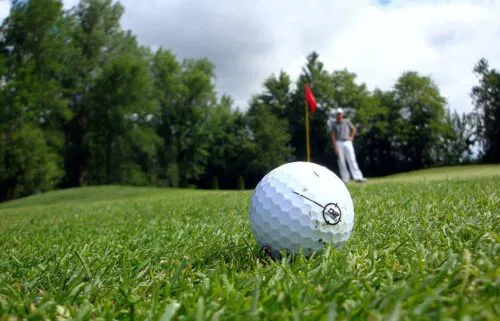Bathroom stall: Tennis toilet break talk swirls in Flush-ing
By HOWARD FENDRICH
AP Tennis Writer
NEW YORK (AP) — How long is too long to take in the bathroom? That, believe it or not, is a real debate at the U.S. Open, thanks to a kerfuffle between Andy Murray and Stefanos Tsitsipas over the toilet break rule in tennis.
Article I, Section W, Paragraph 4 of the 2021 Grand Slam rule book limits women (who play best-of-three-sets) to one trip off court and men (best-of-five) to two trips “for a reasonable time for a toilet break, a change of attire break, or both.”
The discussion at, ahem, Flush-ing Meadows on Tuesday swirled around whether it was “reasonable” that play was delayed for more than eight minutes because Tsitsipas took his time while exchanging his sweaty outfit for a fresh one between the fourth and fifth sets of a nearly five-hour victory over Murray a day earlier.
“What’s your opinion on this? You’re umpiring the match,” three-time Grand Slam champion Murray could be heard saying to the match official. “Give me your opinion. … You think this is good?”
Murray, who swapped shirts while seated on his changeover bench before the final set, is among those who have advocated for some sort of rule switch.
Put a specific time limit in writing, say. Or have stronger consequences than the simple warning that Tsitsipas received from the chair umpire for a time violation Monday, when he and Murray both were soaked from 70% humidity and heat in the low 80s Fahrenheit (high 20s Celsius).
“It’s so vague. Another vague rule in tennis. And I think that’s what Andy was complaining about,” 18-time major champion Chris Evert said during ESPN’s telecast Tuesday. “Let me tell you, eight to 10 minutes, that gives the player time to sit with himself, to figure out what he needs to do, to reset if he needs to, to reach into his bag and get a phone call. Or reach into his bag and read a text. It opens the door to a lot of things that maybe aren’t fair in tennis.”
Calling pace of play “an important issue on our sport,” the U.S. Tennis Association said it needs to “continue to review and explore potential adjustments to the rules, whether for bathroom breaks/change of attire or other areas, that can positively impact the pace of play for our fans and ensure the fairness and integrity of the game.”
The ATP men’s tour said reviewing toilet break rules and those governing medical timeouts “has been an area of focus in recent months,” calling it a “work in progress.” The WTA women’s tour noted that it changed its bathroom rule to allow one break instead of two during matches, adding: “As with any rule, the WTA is always open to conversation and evolving rules if changes are necessary.”
If Tsitsipas’ purpose was gamesmanship, it worked.
Murray lost focus and, he explained later, the lengthy pause in play cooled him down, causing issues physically for a guy who is 34 and has an artificial hip.
On court, Murray used the word “cheating.” At his news conference, he called it “nonsense” and said he “lost respect” for Tsitsipas, a 23-year-old from Greece who was the runner-up at the French Open in June and is seeded No. 3 in New York.
Murray didn’t let it go Tuesday, either. Instead, he stirred the pot by posting a shot via Twitter, replete with emojis of a toilet and a rocket ship: “Fact of the day. It takes Stefanos (Tsitsipas) twice as long to go the bathroom as it takes Jeff (Bezos) to fly into space. Interesting.”
This isn’t the first time the issue has come up with Tsitsipas — or other players. Just one example from Monday: No. 19 seed John Isner left the court for what amounted to a break of more than seven minutes between points after the second set of this three-set loss to Brandon Nakashima in an all-American match Monday.
A little more than a week ago, Olympic gold medalist Alexander Zverev accused Tsitsipas of getting help via phone messages from his father, who’s also his coach, on a lengthy trip to the bathroom during their semifinal at the Cincinnati Masters. Coaching is not allowed during matches.
“He’s gone for 10-plus minutes. His dad is texting on the phone. He comes out, and all of a sudden, his tactic completely changed. It’s not just me, but everybody saw it. The whole game plan changes,” No. 4 seed Zverev said after his win Tuesday. “I’m like: Either it’s a very magical place he goes to or there is communication there.”
Zverev said he views what Tsitsipas does as the “kind of things (that) happen at junior events, at Futures, at Challengers maybe, but not when you’re top three in the world. You are allowed to do that, but it’s like a unwritten rule between players.”
Tsitsipas and Isner did have their defenders.
“We’re drinking. We’re hydrating a lot. We have to use the bathroom. To change my socks, shoes, my inserts in my shoes, shorts, shirt, everything, the whole nine yards, hat — it takes five, six minutes,” No. 22 seed Reilly Opelka of the U.S. said after reaching the second round with a win Tuesday. “Then, by the time I walk to and from the court … .”
___
More AP tennis: https://apnews.com/hub/tennis and https://twitter.com/AP_Sports



